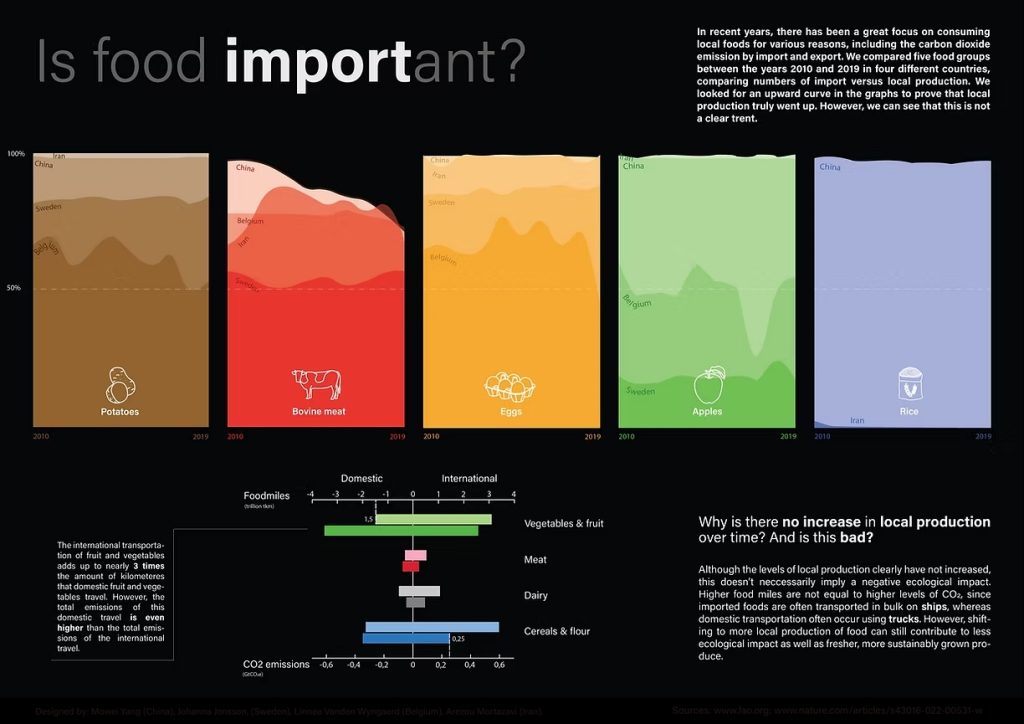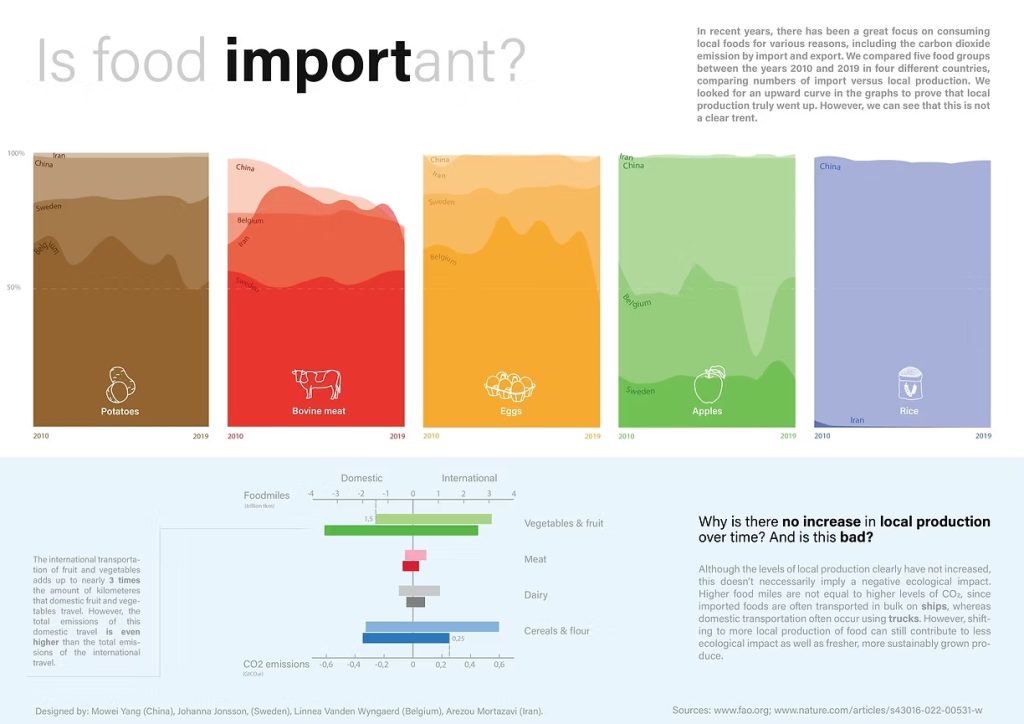
Course project:
Advanced visualization design
My role:
Data visualization, Data analysis
Professor:
Is Food Important? – A Data-Driven Exploration of Local vs. Imported Food
Is it truly better to consume locally produced food rather than imported alternatives? This project explores that question by comparing five different foods across four countries, analyzing the impact from an environmental perspective.
Through interactive data visualizations, users can examine how food production and transportation affect sustainability, resource use, and carbon footprints. By breaking down these insights, the project encourages informed decision-making about food consumption and its broader implications on the planet.
How did we go through this process?
Initially, our goal was to determine the balance between domestically produced and imported food consumption, aiming to understand consumer preferences more accurately. However, we soon encountered a significant challenge—many imported food products undergo processing before being re-exported, making it difficult to track their actual consumption within the country.
To work around this limitation, we adjusted our approach. Instead of focusing on the final consumption of imported goods, we analyzed the broader relationship between domestic food production and total imports. This allowed us to maintain the integrity of our insights while ensuring the data remained reliable and meaningful.
Unveiling the Complexities of Food Production and Environmental Impact
Despite expectations, domestic food production in each country has remained relatively stable over the years, showing no significant increase. Meanwhile, China’s demand for imported bovine products has continued to rise steadily, year after year.
Interestingly, the relationship between food transportation and environmental impact is not as straightforward as one might assume. The number of food miles traveled and the resulting CO₂ emissions do not always correlate directly. While it’s easy to assume that longer distances automatically mean higher emissions, various factors—such as transportation methods, supply chain efficiency, and production practices—play a crucial role in shaping the overall environmental footprint of different foods.
Dark version

Light version

